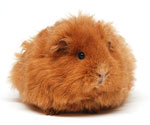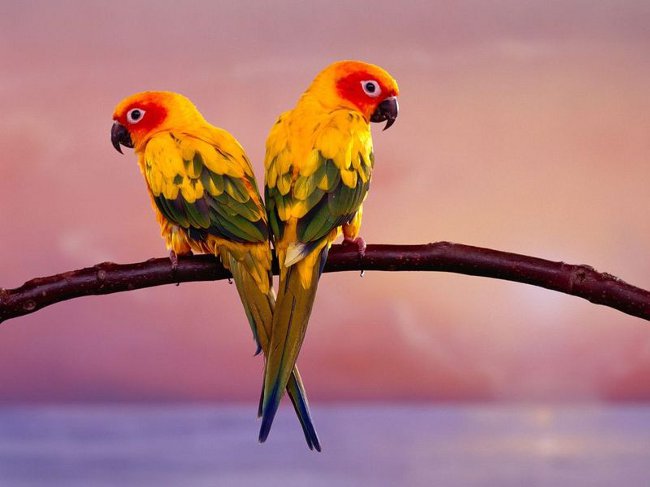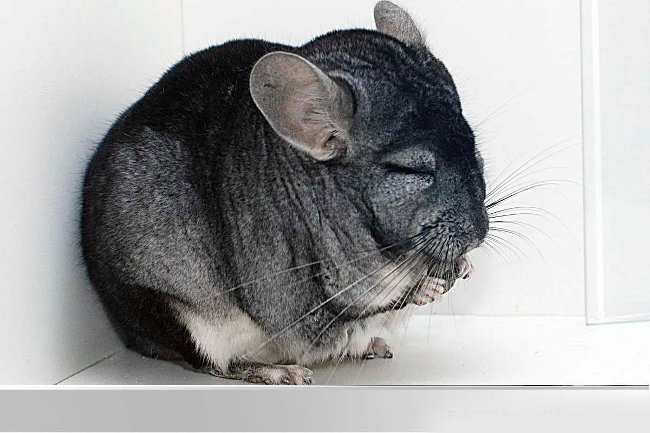How to choose a chinchilla?

So, you have weighed all the pros and cons and are determined to go for chinchillas a pet store, a nursery or a farm. What should I look for when buying a small animal? Of course, first of all - this is the appearance of the animal.
In chinchillas of all colors, it is considered that the shape of the head should be more rounded, rather than elongated, the ears - short, rounded ortube. Backrest - with a smooth curve - without a hump in the area of the shoulder blades, the neck is short and should not be seen from above. The fur should look even, to the touch elastic and dense, without koltunov and bald spots.
A clean spout, bright and shining eyes are a sign of health. There should be no slime and phlegm aroundeyes and nose, this may indicate an infectious disease. The teeth of chinchillas are usually bright orange, smooth and clean, the ears - without crusts, ulcers and sores, the tail is gaily twisted up. Sometimes there are chinchillas, which have small injuries - a hole in the ear, the absence of a phalanx of the finger. All this is the result of games with their relatives and there is nothing terrible here. Do not be frightened of such shortcomings and do not immediately write down the animal in the ranks of disabled people.
Chinchillas for sale by age must reach 2 months. Up to 54 days, babies feed on mother's milk andIt is absolutely undesirable to tear them away from it during this period. If you are not going to breed chinchillas, then the weight of your future pet is not so important. Well, if you have in mind to get a good offspring, then the normal weight for an adult chinchilla should be at least 550 gr.
In the nursery of professional breeders you can show the parents of the chosen animal so that you can imagine how your pet will be in the near future. Chinchilla behavior is also a very important point. Too temperamental and militantanimals will not let you safely hold them in their arms, they will always try to slip away and go about their business. "Tikhoni" never rush through the cage and do not rush to the open door.
You can pour the food, wipe the cage, pat the chinchilla - the animal at best will move to another cornerhis house. As a rule, these are balanced animals, which are noisy and calmly given into the hands. Then you choose. Observe the animal as long as possible, so that later you do not have to return it back with the classic "did not meet the characters."
The problem for chinchillas is lichen. And if the parents of the baby are sick with it, greatthe likelihood that he himself will suffer from this ailment. So look at the animal carefully. Most often, the lichen affects the area of the nose, around the eyes, the chin, the skin behind the ears, the groin area, the base of the tail, the front paws. Lishay looks like redness and peeling of the skin, in these places, as a rule, the hair is very short or completely absent.
It is not so difficult to treat lichen, but it's betterchoose a healthy kid, so as not to have any problems with it. But if you took a beast into the house, picked up the lichen, then the treatment will fall on your shoulders. Also, it is likely that a completely healthy baby in 2-3 weeks suddenly turns out to have a naked spout. Since the fungus is present in the form of a spore almost everywhere and only awaits favorable conditions to activate, the stress from moving to another house can cause the reaction in the animal.
Do not panic, it's not deadly. As a rule, the breeder tells how to properly grow and contain chinchilla, gives advice on caring for and solving small health problems. Do not forget to bring a carry-over to transport the animal. Carry chinchillas in a bag or in your bosom is not recommended.














